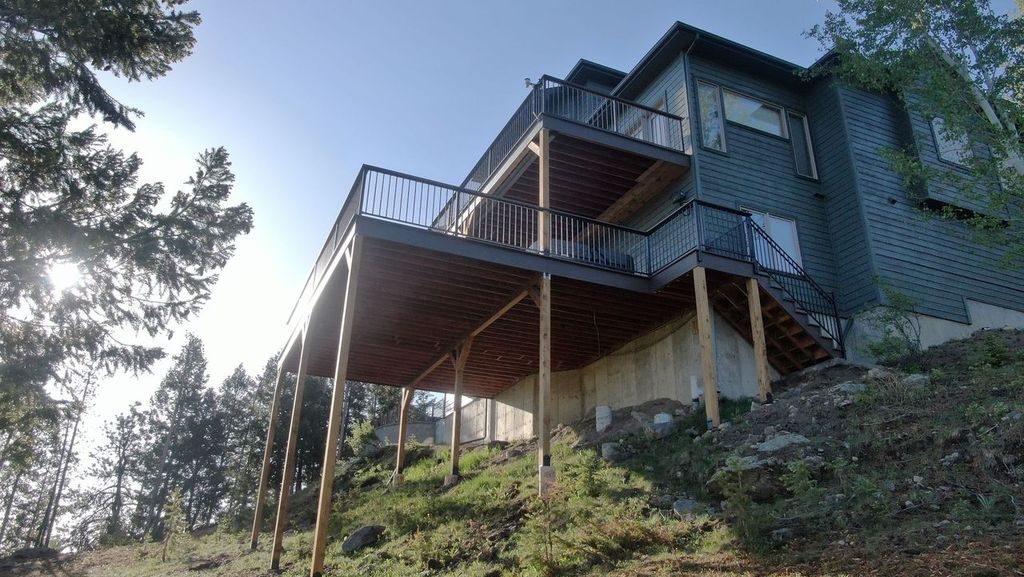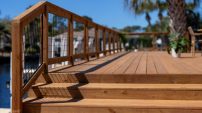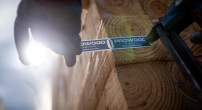A lot of today’s homeowners don’t just want a deck—they want a full-on outdoor living space. Think zones for grilling, dining, lounging, or soaking in a hot tub. But a large, multi-use deck isn’t the same as a typical a 12×16-foot rectangle. Structurally and financially, it’s a different animal.
For advice on how to approach big decks, we spoke with Joanathan Moeller, owner of Colorado Custom Covers & Decks in Morrison, Colo., a contractor with 10 years of experience building outdoor living spaces for demanding clients. His advice will help you avoid blown budgets, sagging structures, and callbacks that consume your weekends.
1. Anticipate load changes early.
Long joist spans. Snow loads. Hot tubs. Big decks come with big demands. “Joists need to be sized to carry extra weight and to keep the floor feeling solid,” says Moeller. Stiffness matters.
Moeller primarily uses ProWood treated lumber for deck framing, unless the design calls for something unique.
Adding a mid-span beam can help—but not if the clients want living space below. In those cases, Moeller sometimes uses a steel I-beam engineered to span the distance without posts. “One project called for a 35-foot steel beam to keep the area under the deck completely open,” he says.
Complex decks may also include elements like angled corners, cantilevers, and step-downs. These can add point loads, can complicate load paths, and may need special connections.
In Moeller’s territory, as in many others, all decks need approval from a structural engineer, but that’s wise practice anywhere. Best practice is to involve the engineer early in the design process.
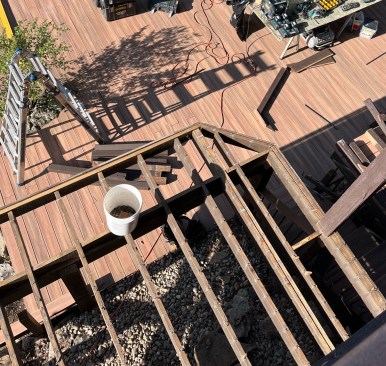
Colorado Custom Covers & Decks
2. Decking choices drive framing layout.
The span requirements for composite decking differ from those of wood. If you’re using synthetic boards, your joist spacing and layout will likely need adjustment.
Length also matters. Moeller buys 20-foot boards and designs his framing to minimize break lines and waste. If your deck will include intentional breaks, make sure the plan and the estimate include support for the end of each board.
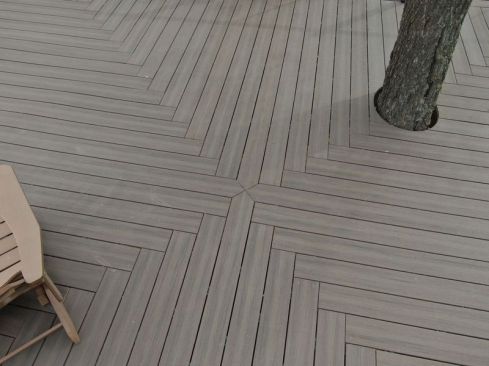
Colorado Custom Covers & Decks
3. More deck means more labor.
If you’re used to 300-square-foot decks, a 1,400-square-footer will eat your lunch if you don’t budget correctly. Think more footings, more framing, more blocking.
Make sure your material and labor estimates are solid. “On large projects, I double-check every line item, especially concrete and framing time,” says Moeller. “Big decks require deep caissons and reinforced footings that can really throw off your labor estimates.”
4. Itemize everything.
If you want to use square-foot pricing to give the clients an initial ballpark estimate, make sure you adjust for complexity. Moeller might quote $30 per square foot for a straightforward job, but that number goes up for a complex layout or a tough site.
He also itemizes the final estimate. “I break it into 20-plus line items—labor, materials, options like kitchens or fire pits.” He says the transparency this provides builds trust with clients.
Extras are always separate line items. “If they add a feature, we price it a la carte. That way, everyone understands what they’re getting and how much it costs,” he says.
5. Don’t underestimate stairs.
Tall decks mean tall stairs—and stairs are a detail that can burn time and money. “Most of our stairs need 9-inch on-center stringers and lots of blocking to feel solid,” says Moeller.
You also need to think through the layout and location. Will the stair block a door or window? Will it take up patio space? Will it shade a basement window? Answer these questions early.
6. Don’t price before engineering.
Once Moeller and the client land on a design concept, he sends it to his structural engineer. That feedback often triggers changes—larger beams, added posts, and revised layouts. “I’ve had 12-inch beams bumped to 15 inch, just to meet span requirements,” he says. Only then can he provide and accurate quote. “After we get that feedback, we finalize the estimate and send it to the client,” he says.
Bottom line: Big decks offer big opportunities—but also bigger risks. Be aware of structural issues, be transparent with costs, and work closely with the client and engineer. You will be rewarded with a solid deck and a solid profit.
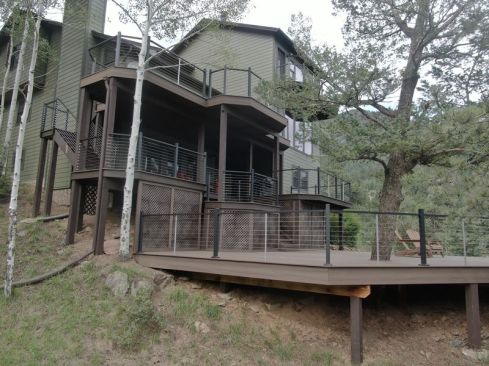
Colorado Custom Covers & Decks
Learn more about ProWood treated lumber for your next deck project.
